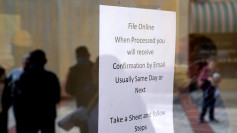On Wednesday, crude oil saw a little increase as hopes for a recovery in Chinese demand and a decision by major oil producers to maintain their output cuts reduced concerns about a possible global recession.
"Expectations that China's fuel demand will recover in the second half of the year are growing and are likely to support the market sentiment," Hiroyuki Kikukawa, general manager of research at Nissan Securities said.
After dropping 2.3% the previous day, Brent crude increased 22 cents, or 0.3%, to US$86.35 per barrel by 5.01 am GMT. After falling 1.8% on Tuesday, the price of US West Texas Intermediate (WTI) oil increased by 13 cents, or 0.2%, to US$80.26 per barrel.
As per Bank of America Securities analysts, during the following 18 months, the reopening of the Chinese economy might release a significant wave of stalled demand. The Organization of the Petroleum Exporting Countries (OPEC) and its allies, collectively known as OPEC+, are anticipated to maintain their output caps, therefore levels on the supply side should be stable over the medium term.
When it meets next week, an OPEC+ panel is likely to support the producer group's current oil output policy, according to five OPEC+ sources, as optimism for increased Chinese demand is offset by concerns about inflation and the global economy.
In response to a dimmer economic outlook, OPEC+ resolved in October to reduce output by 2 million barrels per day from November through 2023. The bigger-than-expected boost in US oil stocks that was published after the market closed on Tuesday, however, restrained the rise in oil prices.
In the week ending Jan. 20, U.S. crude stockpiles increased by around 3.4 million barrels, according to data from the American Petroleum Institute cited by market sources. In a Monday early Reuters survey, an increase of approximately 1 million was predicted; this was triple that number.
For additional trading cues, markets are also keeping an eye out for central banks' choices about interest rates. When the U.S. Federal Reserve meets the next week, investors will be watching to see how to "react to recent downside surprise in inflation and growth".
Australian inflation hit a 33-year high last quarter, according to data released on Wednesday. This unexpected result strengthens the case for the country's central bank raising interest rates again next month.






